The Art and Craft of Hand-Scraped Flooring
Dec 3, 2025, 9:20 AM
Hand-scraped flooring represents a timeless and elegant addition to any space. Revered for its unique texture, rich character, and rustic charm, hand-scraped floors harken back to centuries-old woodworking traditions. In an era when machinery dominates production, hand-scraped flooring stands as a testament to artisanal craftsmanship. The floors' worn, weathered appearance is not merely decorative but tells a story—one that reflects both the maker's skill and the natural beauty of the wood itself. While the aesthetic appeal of hand-scraped flooring is undeniable, many may not fully understand the meticulous processes that go into its creation.
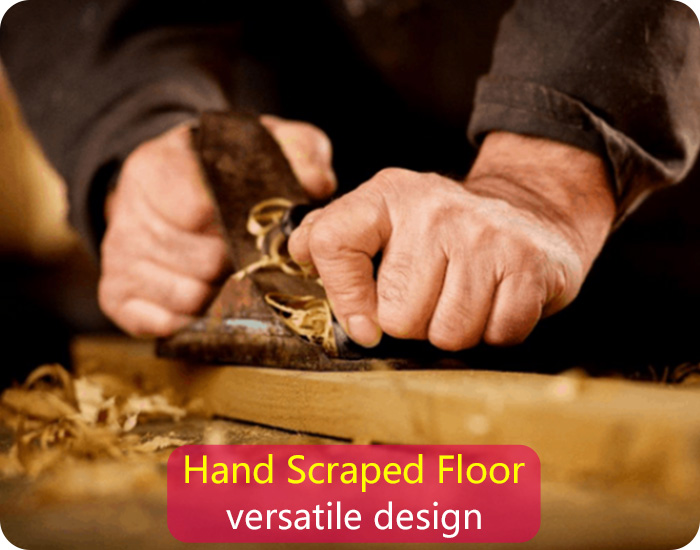
The making of hand-scraped flooring is a labor-intensive process that involves a blend of craftsmanship, patience, and precision. The distinct grooves, ridges, and imperfections seen in hand-scraped wood are not a result of mass production but of carefully planned, manual efforts. Each plank of wood is uniquely shaped, bearing subtle differences that no machine could replicate. These imperfections and textural variations give the flooring an authentic, lived-in look, often reminiscent of old-world charm. Today, consumers who appreciate vintage aesthetics or desire a more custom finish are increasingly opting for this type of flooring.
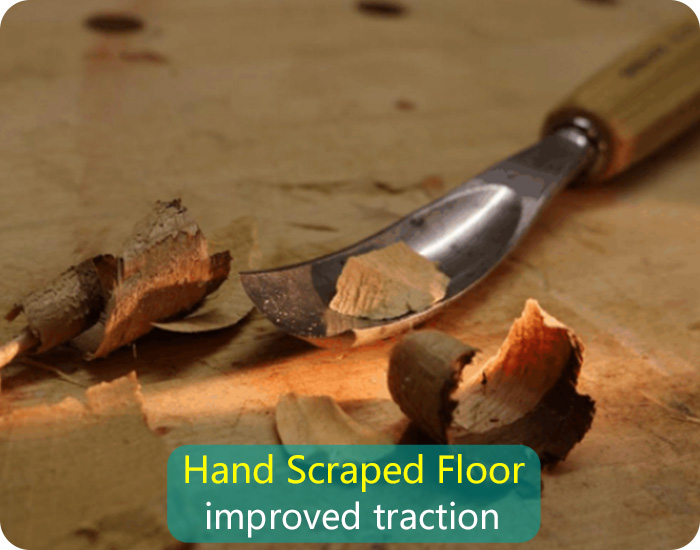
The Wood Selection: Choosing the Right Material
The process of creating hand scraped bamboo flooring begins with the careful selection of wood. Different types of wood provide varying aesthetics and performance characteristics, making this step crucial to the overall success of the project. Common wood species used for hand-scraped flooring include oak, hickory, walnut, maple, and pine, each of which brings unique grain patterns, hardness, and color to the final product.
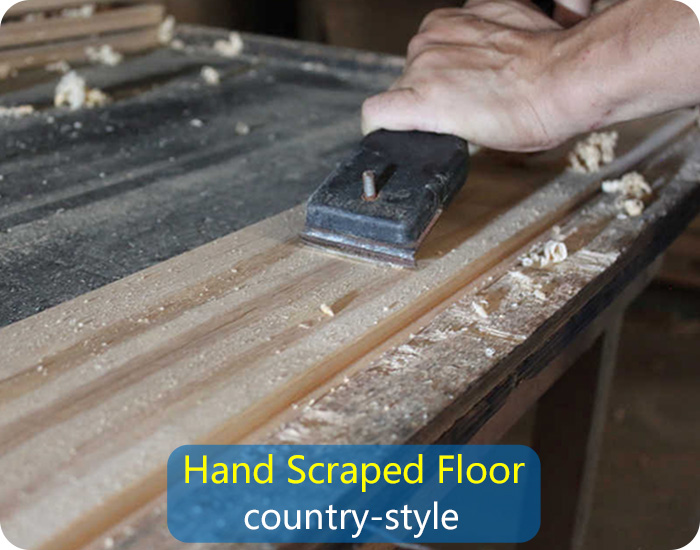
- Oak: Known for its durability and distinct grain, oak is a popular choice for hand-scraped flooring. Its prominent grain allows for dramatic textural variations when hand-scraped, making it a favorite for rustic and traditional designs.
- Hickory: As one of the hardest domestic woods, hickory provides excellent durability and resistance to wear. It features a natural color variation that ranges from creamy white to dark brown, offering a rich and dynamic appearance.
- Walnut: With its deep, dark tones and smooth texture, walnut brings an air of sophistication to hand-scraped floors. While it's slightly softer than oak or hickory, walnut's luxurious appearance makes it a popular choice for high-end designs.
- Maple: Known for its smooth grain and light color, maple offers a more subtle texture when hand-scraped, making it ideal for modern or transitional spaces where a refined look is desired.
- Pine: As a softwood, pine is more susceptible to dents and scratches, but this can enhance the rustic appeal of hand-scraped flooring. Pine's natural knots and imperfections make it a perfect fit for homes with a country or farmhouse aesthetic.
The Tools of the Trade: Crafting by Hand
Creating hand-scraped flooring requires specialized hand tools, each designed to create specific textures and patterns in the wood. Some of the most common tools used include:
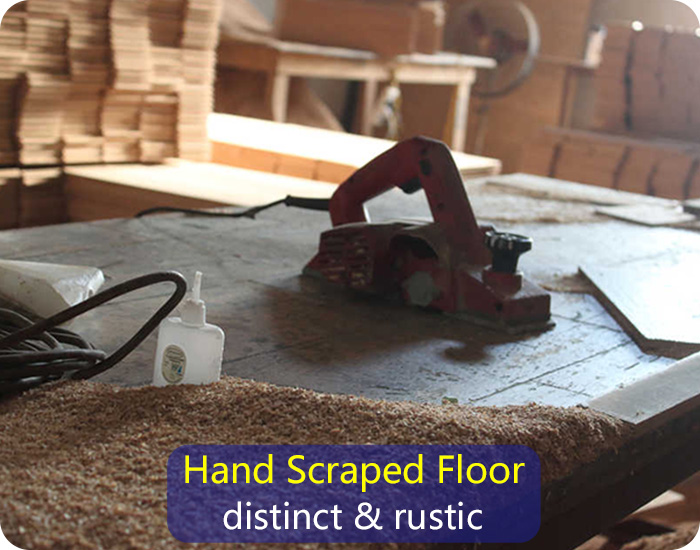
- Draw Knives: A draw knife consists of a blade with two handles and is used by pulling the blade toward the body, shaving thin layers of wood from the plank. This tool creates the characteristic ridges and waves in hand-scraped flooring.
- Scrapers: Scrapers are used to smooth out areas of the wood while still leaving subtle textural variations. Unlike draw knives, scrapers create a more uniform appearance, making them ideal for blending different areas of the plank.
- Chisels: Chisels are often used to create deeper gouges or accents in the wood, adding a sense of age and character to the floor. The artisan will often angle the chisel in different directions to create random, organic patterns.
- Sandpaper: While hand-scraped floors are designed to retain texture, some areas may be smoothed out with sandpaper to achieve a balanced finish. This helps prevent the floor from feeling too uneven underfoot.
Each plank is individually hand-scraped, and because this is done by hand, no two planks are exactly the same. The artisan uses their skill and experience to ensure that the floor's texture is consistent while still embracing the natural variation that makes hand-scraped flooring so appealing. Depending on the desired finish, the scraping can be more aggressive for a heavily textured look or more subtle for a smoother appearance.
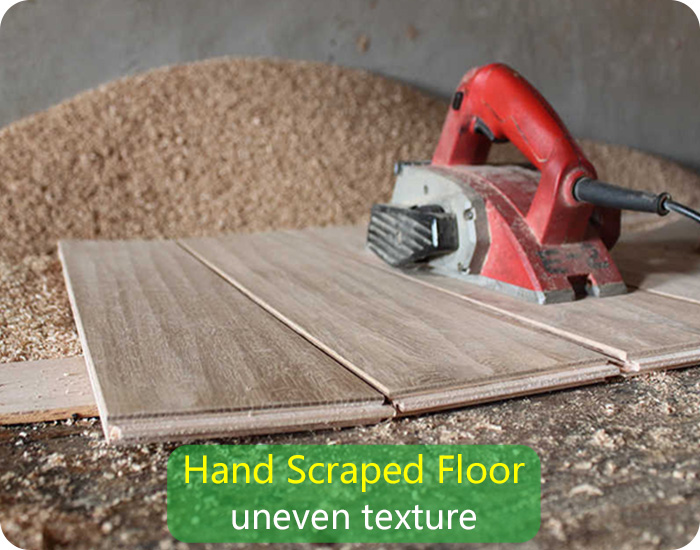
Finishing Touches: Staining and Sealing
Once the scraping process is complete, the planks are ready for staining and sealing. Staining enhances the natural grain of the wood and brings out the texture created during the scraping process. Various stain colors can be applied, from light, natural hues to deep, rich tones, depending on the desired look.

After staining, a protective finish is applied to seal the wood and provide durability. Common finishes include oil-based or water-based polyurethane, which offers resistance to scratches, moisture, and daily wear. The finish can range from matte to glossy, with matte finishes often preferred for a more rustic or vintage look. The combination of modern technology and time-honored aesthetics allows manufacturers to meet the growing demand for hand-scraped flooring without compromising on the rustic charm that has made it such a popular choice for homeowners and designers.
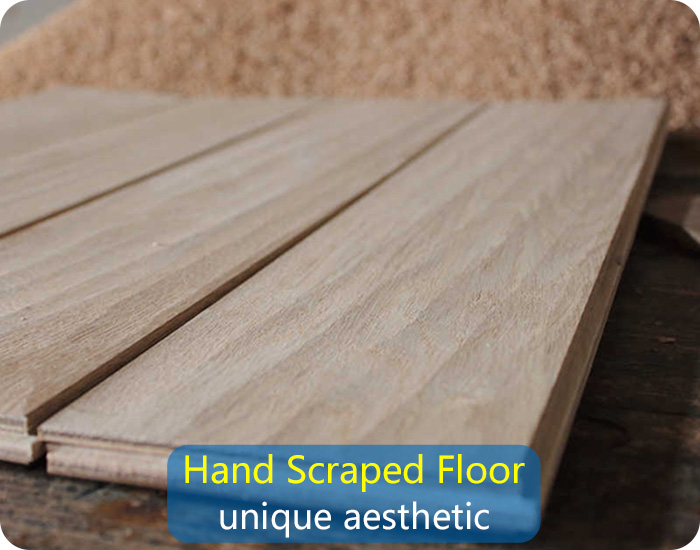


 皖公网安备 34180202000049号
皖公网安备 34180202000049号